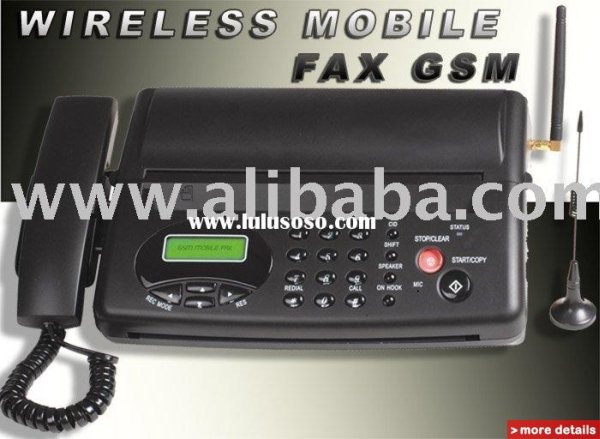Meltdown: Thermal Transfer Fax Machine
Though thermal paper is still useful for thermal printers of receipts and bar codes, a different kind of thermal method has taken over for most modern thermal fax machines [source: Sems]. Whereas thermal paper allows for direct application of heat to the paper, the thermal transfer method uses a third agent between the heating element printhead and the paper. This middleman is a ribbon that contains the necessary “ink.” However, it’s still considered a thermal fax machine because heat is necessary to transfer the ribbon’s ink onto the paper.
Unlike with the direct method, you don’t have to buy special paper for thermal transfer machines; instead this kind of machine can use plain paper. However, the printhead uses roughly the same basic technology as the one that prints on thermal paper. The printhead provides heat to the thermal transfer ribbon in the appropriate places and melts these areas down. This melting process makes the ribbon release the ink it contains onto the paper fed through the machine.
The ribbon itself can consist of a base film made of a material such as polyester, and attached to that is the substance that makes up the ink[source: Watanabe]. Another layer of protective coating keeps it from sticking to the printhead. The ink layer is typically made of one of three materials:
- Wax: Thermal ribbons consisting of wax are often the cheaper option. However, these ribbons don’t produce the highest quality print-outs. Documents printed using wax thermal ribbons can easily smudge after being exposed to heat or scratched.
- Resin: Resin is a material secreted naturally from certain plants or artificially manufactured. Though it originates in a viscous (gooey and sticky) state, it later hardens. Resins are extremely useful in the manufacturing of such things as paints and plastic. Using a resin material, thermal ribbons print a higher quality document that doesn’t easily smudge. However, it’s more expensive than the wax kind.
- Wax/Resin Composite: This is a popular middle-of-the-road choice material for thermal ribbons because it’s not as expensive as resin and not as low quality as wax.
So, in the thermal transfer method, the printhead receives the encoded information about when and where to heat up, just as in the direct thermal method. However, this time, the ribbon runs along between the paper and the printhead. As the printhead heats the ribbon’s ink material, it releases the ink, which proceeds to melt onto the paper.
Knowing the thermal methods of these kinds of fax machines allows us to understand their advantages, which we’ll discuss on the next page.
For more detail: How Thermal Fax Machines Work

